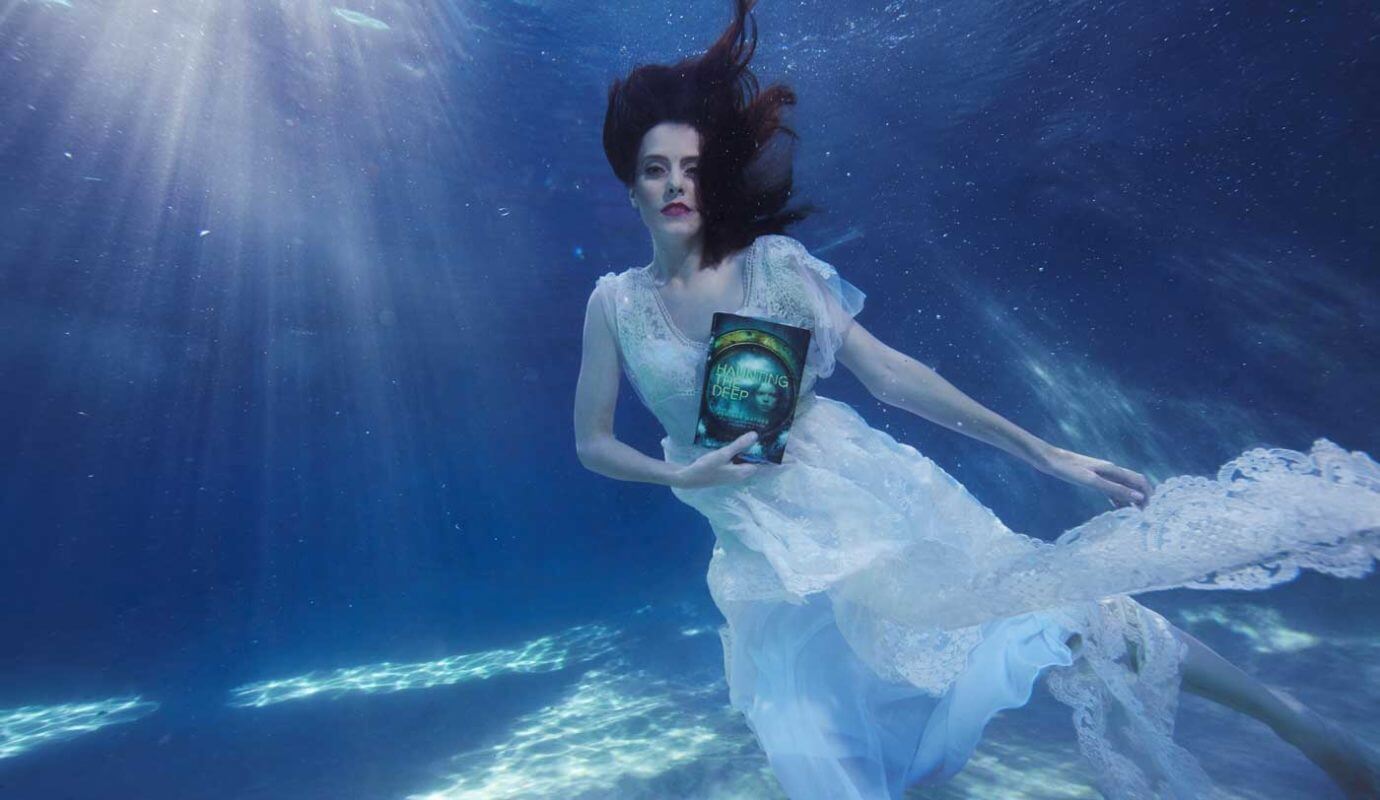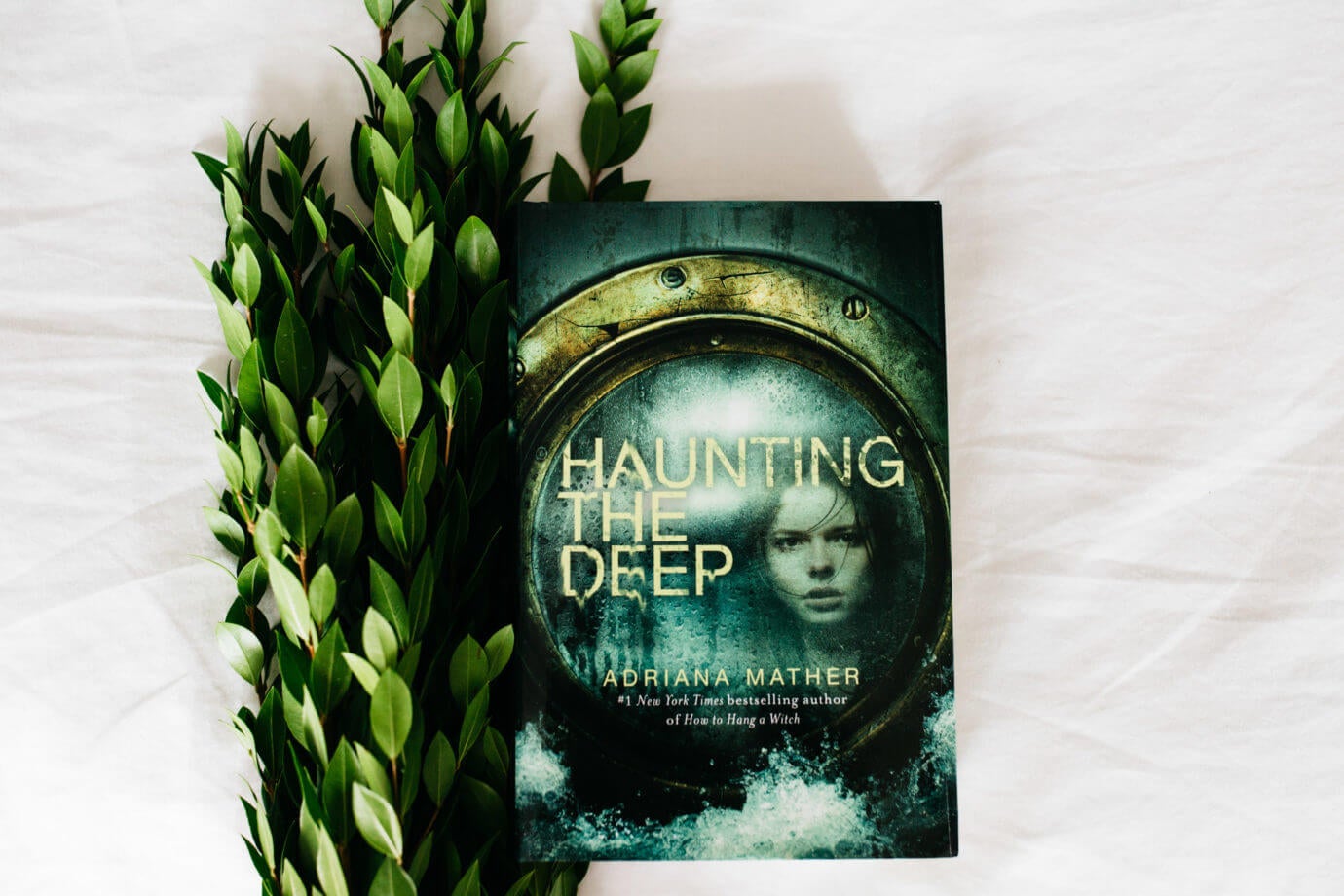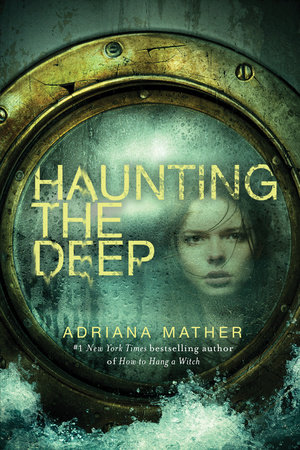The Titanic sank 106 years ago, and the movie came out twenty years ago. Today we are STILL fascinated by the “unsinkable” ship. New York Times bestselling author Adriana Mather discovered that she has a personal connection to the Titanic, which led her to write her latest novel Haunting the Deep. Here’s what she learned along the way. . .

Shortly after writing How to Hang a Witch, I discovered an envelope in my grandmother’s desk, nestled among a stack of old letters and newspapers. It had the word Titanic scrawled across the front. When I first found it, I thought,
No, not that Titanic. Couldn’t be.
But sure enough, inside was a letter on faded stationery with a New York letterhead, recounting how my relatives Myra Haxtun Harper and Henry Sleeper Harper survived the Titanic, along with Hammad Hassab and their dog (one of three dogs to survive). I knew immediately that I needed to write another mystery and include the real letter as a clue.

With this personal artifact from history in my hand, I hunkered down to read about the Titanic (by the fireplace, of course, where I sipped a hot apple cider while wearing an Edwardian evening gown . . . or at least that’s how it went in my head). The more research I did for Haunting the Deep, the more my mind was blown by how little I knew. Here is a quick list of things I discovered along the way:
1. Not only was the Titanic the world’s largest passenger ship at 882 feet, but it was the largest moving man-made object on earth. It took twenty horses to carry the main anchor. And it required between 620 and 825 tons of coal per day, hand-shoveled into furnaces by 176 men, just to keep the lights on.
2. The most expensive first-class ticket to New York was more than £500 (approximately $70K today).
3. For unknown reasons, the ship’s cat carried all her kittens off the Titanic before it left Europe.
4. A lifeboat drill, scheduled for April 14, was canceled for unknown reasons. Only sixteen wooden lifeboats and four collapsible lifeboats were on board, enough to carry approximately 1,178 people (just over half the passengers). However, the lifeboats weren’t loaded to capacity and few more than 700 people survived.
5. There were only thirty-seven seconds between the spotting of the iceberg and the collision.
6. There were thirteen couples honeymooning on board.
7. Esther Hart had premonitions of disaster. While on board, she stayed up all night every night, fully clothed, waiting for the unknown catastrophe she was positive would come.
8. When James Cameron was exploring the wreckage to make the movie Titanic, he discovered my relative Henry Harper’s hat still sitting on the remains of a wardrobe in Henry’s cabin.
9. One of the passengers, William Stead, published a story in the 1892 Review of Reviews called “From the Old World to the New.” It was about an accident involving a White Star Line vessel and an iceberg.
10. The selfless acts among the crew were innumerable. The musicians played until they couldn’t. The wireless operators sent distress signals after they were told they could leave their posts. And none of the engineers made it off—they worked to keep the lights on for everyone else.

The more research I did, the more I felt a nagging sensation that I was reminded of something. As I read countless heartbreaking stories of loss and kindness, I realized why—some people were given priority in boarding lifeboats, while many of the third-class passengers and crew were never given a chance. It’s a social construct that still exists around the world today, where the privileged receive opportunities that the marginalized do not.
History does repeat itself...
There I was, thinking I was writing another autumnal mystery with magic, haunted houses, and lots of hot cocoa, and I was actually learning a lesson. History does repeat itself, and if we don’t pay attention, we will be forever repeating our mistakes. But if we revisit history, question history, and discuss the mechanisms behind it, not only can we learn from it, but we can break the cycle.



